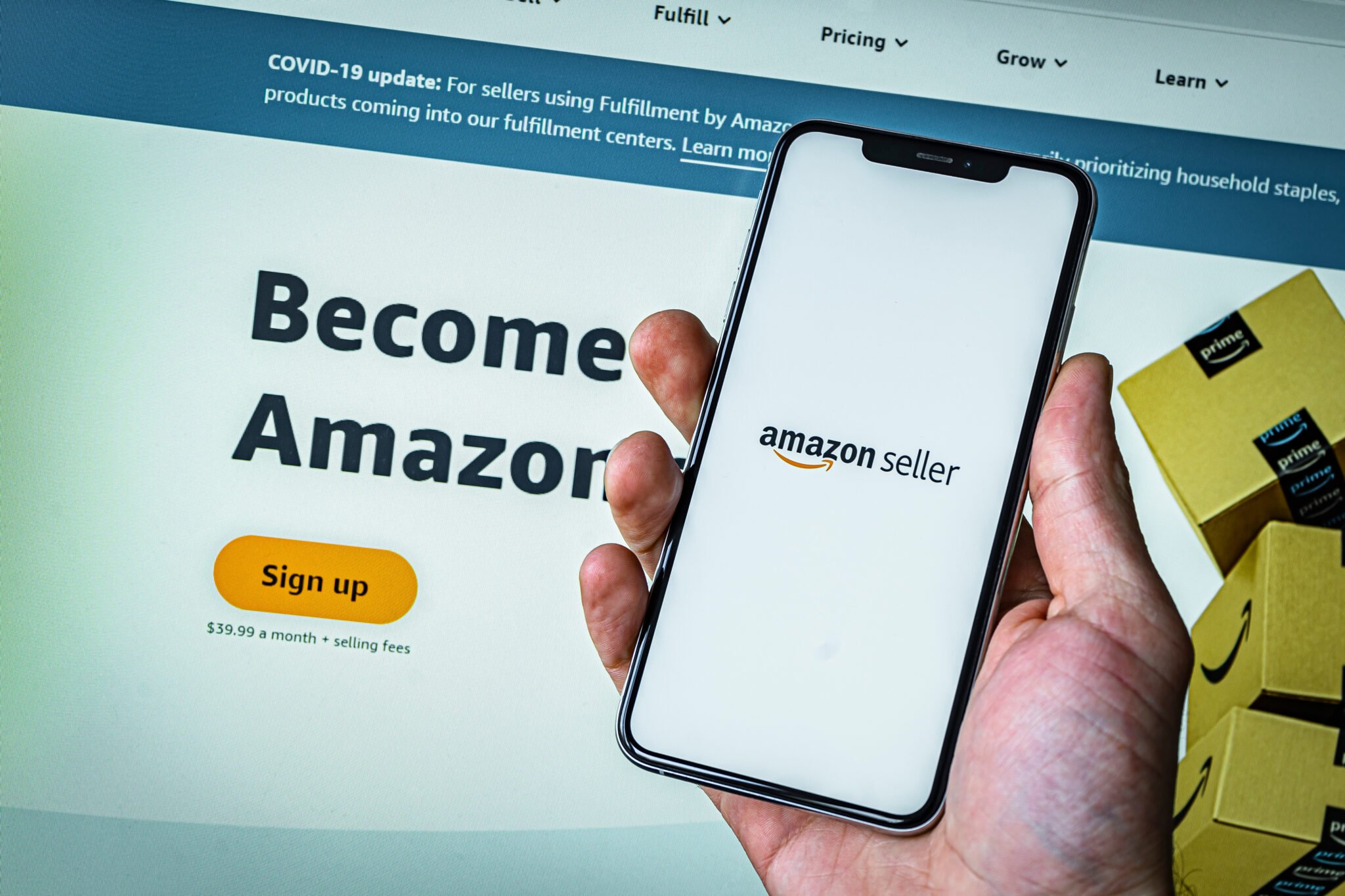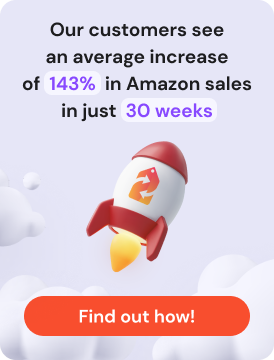Choosing the right repricing tool can be the difference between consistent Buy Box wins and watching your competitors dominate your listings. With dozens of repricing solutions available, each promising to boost sales and automate pricing, how do you know which features actually matter?
This guide cuts through the noise. Whether you’re selling FBA, FBM, private label, or wholesale, you’ll learn exactly which repricing capabilities are essential, which are nice-to-have, and how to avoid costly mistakes that can erode your margins or tank your seller metrics.
What a Repricer Actually Does
At its core, an Amazon repricing tool monitors your competitors’ prices and automatically adjusts your listings to stay competitive. But not all repricers work the same way.
The Three Types of Repricing:
- Static Pricing – You manually set prices and adjust them periodically. This approach is time-consuming and leaves money on the table during high-demand periods.
- Rule-Based Repricing – You create conditional rules (e.g., «match the lowest FBA price + $0.50»). The tool executes these rules whenever competitor prices change.
- AI-Powered Repricing – Advanced algorithms analyze historical data, competitor behavior, Buy Box probability, and market trends to make intelligent pricing decisions automatically. Learn more about how Amazon repricing automation works in practice.
How the Process Works:
The repricing cycle operates continuously: the tool scans competitor prices → applies your rules or AI logic → calculates the optimal price → updates your listing on Amazon. Top-tier repricers complete this cycle in minutes or even seconds, while basic tools may only reprice every few hours.
Understanding this distinction is critical because repricing speed directly impacts your ability to win the Buy Box in competitive categories. If you’re new to repricing concepts, our repricing basics guide provides a foundational overview.
The 7 Essential Features Every Seller Needs
Not all repricing features are created equal. Here’s what you absolutely need versus what’s optional:
1. Buy Box Targeting ✅ (Essential for Everyone)
The Buy Box accounts for approximately 82% of Amazon sales. Your repricer must be specifically designed to target Buy Box eligibility, not just match the lowest price.
Why it matters: A tool that only undercuts competitors will destroy your margins. Buy Box-focused repricing balances competitiveness with profitability by understanding Amazon’s algorithm factors beyond price alone.
What to look for: Strategies that consider fulfillment method, seller rating, shipping speed, and stock availability when calculating optimal prices.
2. Min/Max Price Guardrails ✅ (Essential for Everyone)
This is your safety net. Without minimum and maximum price boundaries, automated repricing can spiral out of control.
Why it matters: Imagine waking up to find your $50 product repriced at $5.00 because a competitor made a pricing error, or your algorithm chased a price war to the bottom. Min/max settings prevent these disasters.
What to look for: Per-SKU or per-category price floors and ceilings that your repricer will never violate, regardless of market conditions.
3. FBA + FBM Support ✅ (Essential for Mixed Sellers)
If you use multiple fulfillment methods, your repricer must handle both intelligently. FBA and FBM sellers have different cost structures and competitive advantages.
Why it matters: FBA items typically win the Buy Box at higher prices due to Prime eligibility. A repricer that treats FBA and FBM identically will either overprice your FBM items or underprice your FBA inventory.
What to look for: Separate repricing strategies for each fulfillment method with customizable logic based on your specific cost structure.
4. Repricing Speed ✅ (Essential for Competitive Categories)
In high-traffic categories like electronics, toys, or supplements, the Buy Box can change hands dozens of times per hour.
Why it matters: If your tool reprices every 30 minutes while competitors reprice every 5 minutes, you’ll lose sales during those gaps. The faster your tool reacts to market changes, the more Buy Box time you capture.
What to look for: Real-time or near-real-time repricing (every 2-5 minutes) rather than hourly or slower intervals. Repricer.com offers repricing speeds as fast as every 2 minutes, ensuring you never miss competitive opportunities.
5. Seller Metric Awareness ⚠️ (Important for Buy Box Contenders)
Amazon’s Buy Box algorithm considers more than just price. Your Order Defect Rate, late shipment rate, and customer feedback all play a role according to Amazon Seller Central guidelines.
Why it matters: If your metrics drop below Amazon’s thresholds, aggressive repricing won’t help you win the Buy Box. A metrics-aware repricer can adjust strategy when you’re temporarily ineligible or adjust pricing to maintain profitability when Buy Box likelihood is low.
What to look for: Integration with Seller Central metrics and automatic strategy adjustments based on your account health.
6. Custom Rule Logic ⚠️ (Important for Resellers & High-SKU Catalogs)
While AI is powerful, sometimes you need manual control. Custom rules let you create specific repricing strategies for different scenarios.
Why it matters: You might want to price differently for slow-moving inventory, seasonal products, or items with MAP (Minimum Advertised Price) restrictions. One-size-fits-all logic doesn’t work for every situation.
What to look for: Conditional rules that support «if/then» logic, competitor-specific targeting, time-based strategies, and inventory-level triggers.
7. Easy Setup & Intuitive UI ✅ (Essential for Everyone)
A powerful repricer is useless if you can’t figure out how to use it properly.
Why it matters: Complex tools with steep learning curves lead to misconfigured strategies, pricing errors, and seller frustration. Time spent wrestling with software is time not spent growing your business.
What to look for: Clear onboarding process, visual rule builders, pre-built templates for common scenarios, and responsive customer support. The best tools let you start repricing within 15 minutes of signup.
Bonus Features That Add Real Value
Once you’ve covered the essentials, these advanced capabilities can give you an edge:
AI-Driven Dynamic Pricing: Machine learning algorithms that adapt to market conditions, predict competitor behavior, and optimize for both velocity and margin. Understanding eCommerce pricing strategies helps you make the most of these advanced features.
Inventory-Aware Logic: Repricing strategies that adjust based on stock levels—pricing more aggressively to move excess inventory or protecting margins when supply is limited.
MAP Enforcement: Critical for wholesale sellers and brand-authorized resellers who must maintain minimum advertised prices. Automated compliance prevents policy violations.
Multichannel Sync: If you’re exploring opportunities beyond Amazon on Walmart, eBay, or other marketplaces, unified repricing across platforms saves time and prevents inventory conflicts.
Advanced Analytics: Detailed reporting on Buy Box percentage, price elasticity, competitor movements, and profit impact helps you refine your strategy over time. Competitor price analysis becomes much easier with robust analytics tools.
Mobile Access & Alerts: Real-time notifications about significant price changes, Buy Box losses, or strategy opportunities let you manage your business on the go.
Mistakes to Avoid When Choosing a Repricer
Even experienced sellers make these critical errors:
- Going Free Without Protection Amazon’s built-in Automate Pricing tool is free but lacks essential safeguards. Many sellers have lost thousands by using it without proper min/max configurations or competitor filtering.
- Ignoring Repricing Intervals That budget tool might seem like a bargain until you realize it only reprices every hour. In competitive categories, you’ll lose Buy Box share to sellers with faster tools.
- Skipping the Test Drive Never commit to a repricer without trying the interface. A confusing dashboard will cost you time and potentially money through misconfigured rules.
- Feature Overload Paying for advanced AI and multichannel sync when you’re a single-channel FBA seller with 50 SKUs is wasteful. Match features to your actual business needs. Check out the complete list of best Amazon seller tools to understand how repricing fits into your overall tech stack.
- Neglecting Customer Support When repricing goes wrong, you need quick help. Check reviews for responsiveness, not just features. A tool with live chat or phone support can save you from costly downtime.
Recommended Tools That Cover the Essentials
Based on the features outlined above, here’s how leading repricers stack up:
Repricer.com – Best for sellers who want comprehensive features with exceptional speed. Offers 2-minute repricing intervals, Buy Box optimization, advanced rule customization, and FBA/FBM support. The intuitive interface and powerful features make it accessible for beginners while providing the depth experienced sellers need. Strong choice for private label, wholesale, and arbitrage sellers across all experience levels. With transparent pricing plans that scale with your business, it’s an investment that pays for itself quickly.
Aura – Specializes in FBA private label sellers with a focus on profitability over pure velocity. Strong analytics dashboard and inventory-aware pricing logic. Best for established brands prioritizing margin protection.
Seller Snap – AI-driven repricing with sophisticated algorithms that learn from your sales history. Steeper learning curve but powerful for data-focused sellers managing large catalogs.
BQool – Budget-friendly option that covers essential features without premium pricing. Good starter tool for new sellers who want automation without complexity.
Amazon Automate Pricing – Free tool built into Seller Central. Adequate for testing repricing concepts but lacks the speed, flexibility, and safety features of dedicated tools. Best used as a temporary solution while evaluating paid options.
When evaluating these tools, consider exploring our ultimate guide to repricing for deeper insights into how repricing impacts different business models.
Your Repricer Selection Checklist
Before committing to any tool, verify it checks these boxes:
Must-Have Features:
- ✅ Buy Box-focused repricing strategy
- ✅ Minimum and maximum price protection per SKU
- ✅ FBA and FBM support (if applicable)
- ✅ Repricing speed under 15 minutes (under 5 minutes for competitive categories)
- ✅ Intuitive interface you can learn in under 30 minutes
- ✅ Clear pricing with no hidden fees
Important Features:
- ⚠️ Custom rule builder with conditional logic
- ⚠️ Seller metric integration
- ⚠️ Multiple repricing strategies for different scenarios
- ⚠️ Responsive customer support (live chat or phone)
- ⚠️ Free trial to test before committing
Nice-to-Have Features:
- 🎁 AI-powered dynamic pricing
- 🎁 Inventory-level repricing logic
- 🎁 MAP enforcement tools
- 🎁 Detailed analytics and reporting
- 🎁 Mobile app or alerts
- 🎁 Multichannel support
Making Your Final Decision
The right repricing tool isn’t about having every possible feature—it’s about matching capabilities to your specific business needs and growth stage.
New sellers should prioritize ease of use, safety features, and responsive support. Your first repricer should help you learn automated pricing without risking your margins.
Established sellers with larger catalogs need speed, customization, and advanced analytics to maintain their competitive edge across hundreds or thousands of SKUs.
The investment in a quality repricing tool typically pays for itself within the first month through improved Buy Box percentage and time savings. Choose based on your fulfillment method, category competitiveness, and technical comfort level—not just price.
Ready to find your ideal solution? Start with a free trial of a tool that matches your business model, test it against your specific challenges, and measure the impact on your Buy Box percentage and margins. The right repricer will feel like an extension of your team, working 24/7 to keep you competitive while you focus on sourcing, marketing, and growth.
For B2B sellers, check out our guide on Amazon Business repricing to understand how business-specific features can benefit your operation.
Frequently Asked Questions
Do I need a repricer as a new seller? Even new sellers benefit from repricing automation if you’re in competitive categories or managing more than 10-20 SKUs. A repricer saves time, prevents manual pricing errors, and helps you win the Buy Box more consistently. Start with a tool that offers strong safety features and an easy learning curve.
What’s the most important repricing feature? Min/max price guardrails are non-negotiable—they protect your business from catastrophic pricing errors. After that, Buy Box targeting is essential since winning the Buy Box directly impacts sales velocity. Everything else depends on your specific business model and category.
Can I switch tools later? Yes, switching repricers is straightforward. Most tools allow you to import your product catalog via CSV or API, and you can typically migrate within a few hours. Many sellers test multiple tools before settling on their favorite, so don’t feel locked in by your first choice.
Is AI necessary for good results? Not necessarily. Rule-based repricing works well for many sellers, especially those with smaller catalogs or straightforward competitive situations. AI tools for Amazon sellers add value when managing large inventories, rapidly changing markets, or complex competitive dynamics. Start with rules and upgrade to AI as your business scales.
How much should I budget for a repricer? Most quality repricers cost between $50-$200 per month depending on your sales volume and feature needs. This investment typically generates 5-10x ROI through increased Buy Box time and reduced manual work. Consider it a core business expense like inventory management or accounting software.




